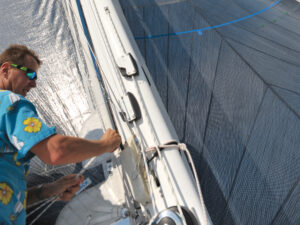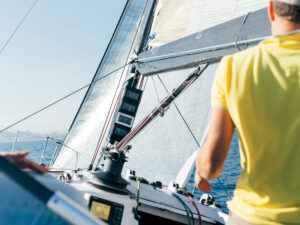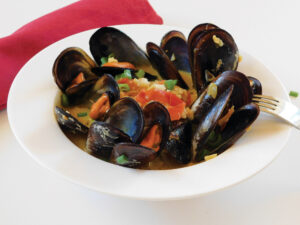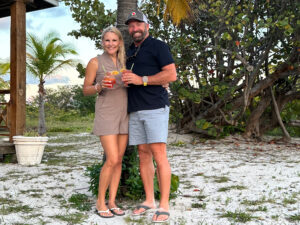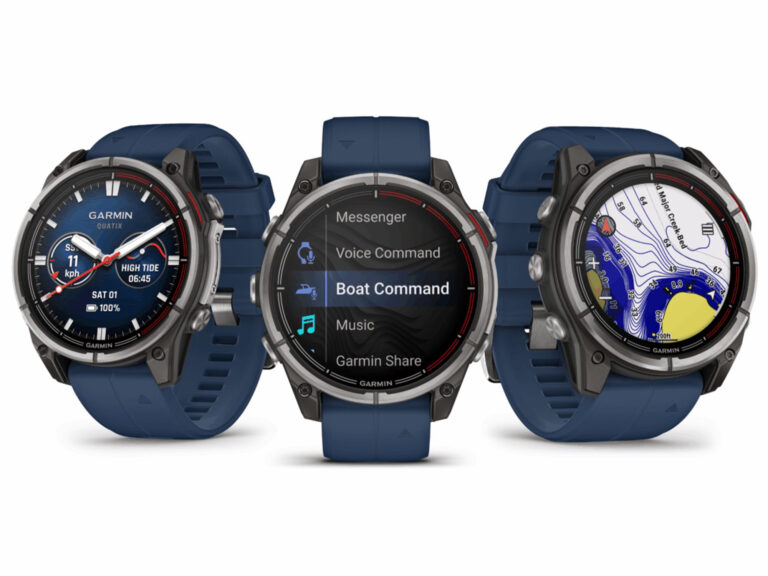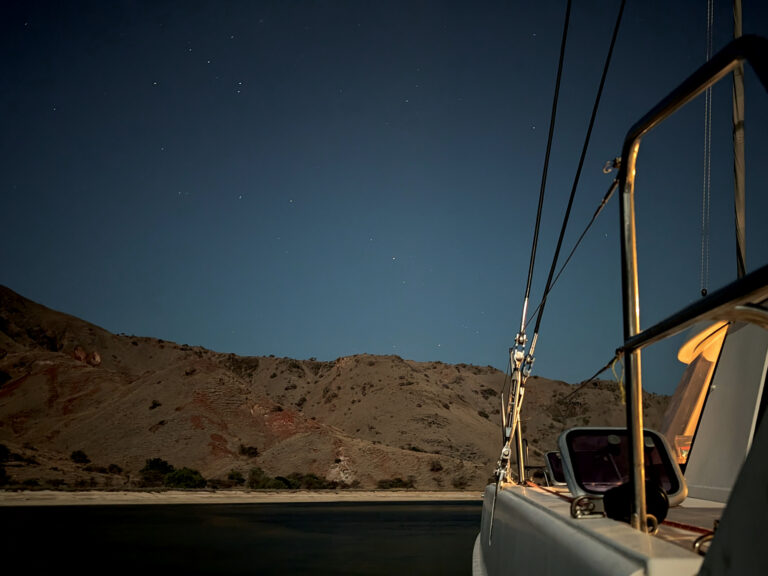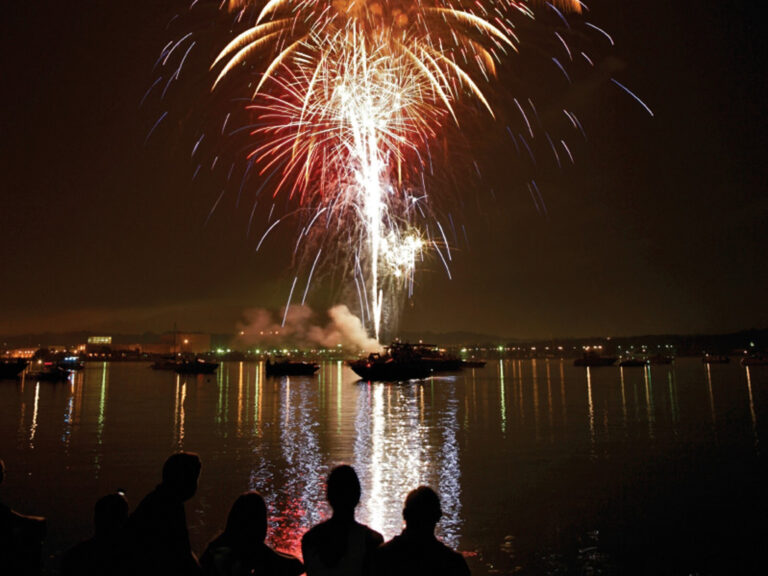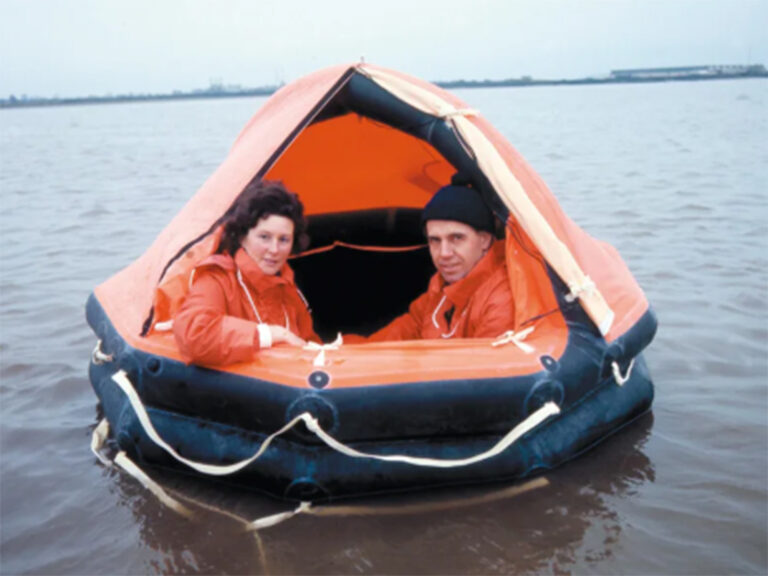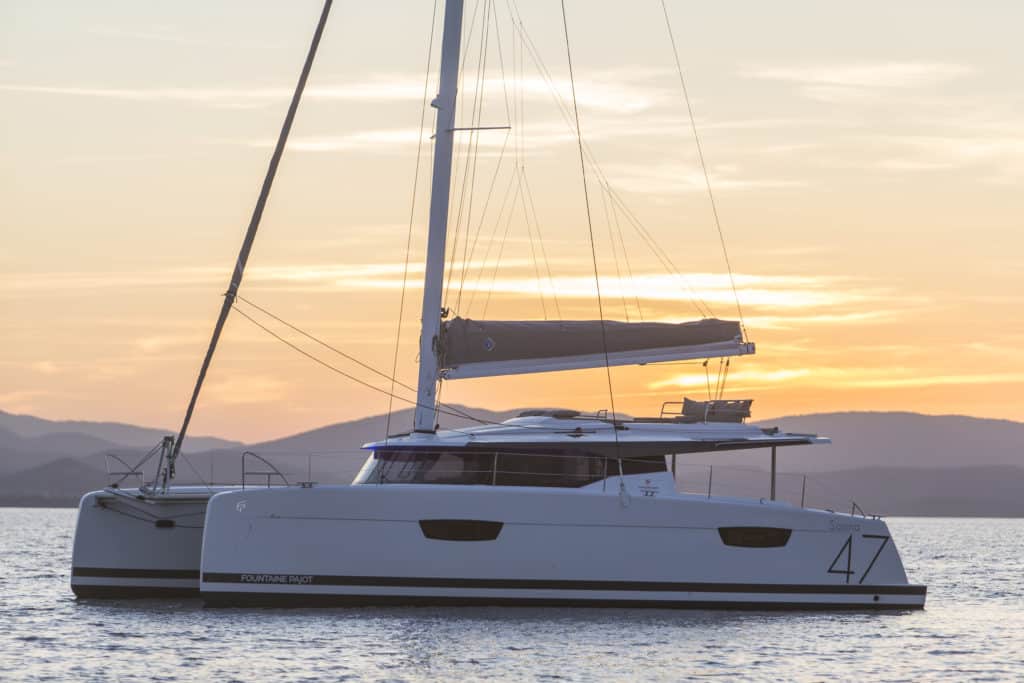
Graced with white-sand beaches, swaying palms and shallow waters teeming with wildlife, Isla Saona would seem the perfect waypoint for a cruising catamaran — say, for instance, Fountaine Pajot’s new midsize model, which actually bears the same name as the popular destination that lies off the southeast tip of the Dominican Republic.
The Saona 47 was introduced last spring during the international multihull show in La Grande-Motte, France, and it completes the makeover of the Fountaine Pajot sailboat range that includes models from 40 to 67 feet, all named for exotic, sailor-inspiring landfalls. Like its siblings, the Saona was developed by Berret-Racoupeau Yacht Design and FP’s in-house engineers, with interior styling by Isabelle Racoupeau. As a result, a distinctive look and feel — reverse sheer, flared-out hulls, stylish cabin top, and modern finish throughout — flow from one boat to the next.
Stepping aboard the Saona during the show, I was immediately taken with the light pouring into the saloon through wraparound windows, long overhead skylights and sliding glass panels that open onto the cockpit to bring the outdoors in. Later, under sail, I was equally impressed by the ease with which I could move around the boat, from transom to bow, up the three steps from the cockpit to the raised helm station to starboard, and up another three stairs to the lounging area atop the bimini, to port of the centerline. Better yet, the designers found a sensible way to provide headroom under the boom (63 inches) for those enjoying the view perched on the topside couch and sun cushions while keeping the gooseneck on the mast just 37 inches off the cabin top, so opening and closing the mainsail’s boom pouch doesn’t require the acrobatics needed on a lot of other cats.
On the day of our test sail, the breeze was light. Still, the Saona clicked along at 5.4 knots closehauled in about 7 to 8 knots of wind. The cat felt quite agile and the helm felt responsive for a boat that carries more than 25 feet of beam. As the breeze perked up to 11 or so knots and we fell off to a reach, the speedo jumped to 7.6 knots. For chartering, the Incidence main and slightly overlapping genoa (set on a Facnor roller furler) should provide ample horsepower for hopping along from anchorage to anchorage. For cruising, I’d definitely add a downwind sail to the mix and take advantage of the boat’s sprit.
The helm station, which can also be entered at deck level, is similar to the arrangement FP employs on the Helia 44 Evolution. The helmsman sits on a three-person bench, with the wheel and engine controls mounted just forward on a pedestal. There is a pass-through between the pedestal and the cabin top, where three winches (one’s electric to handle the halyard) and line-handling clutches are mounted. This lets the crew assist with sail trim but requires the skipper to step forward to reach the sheets — a maneuver I found easy enough to do without bothering to engage the autopilot, for minor adjustments at least.
Saonas are built in two configurations: a three-cabin Maestro private-owners model and a five-cabin charter layout.

In charter mode, the starboard hull has a fore-and-aft double bunk in the aft cabin and an athwartship berth forward, with en-suite heads and showers between. There is a single crew cabin in the bow. To port, a single-bunk cabin sits amidships, between two double cabins, all with athwartship berths and en-suite heads. The Maestro layout features an owners suite that takes up the entire port hull, with a double berth aft, desk and cabinetry amidships, and a head with a distinctive shower arrangement forward that’s set off from the toilet, sink and vanity by a fore-and-aft wall of glass. The starboard hull is laid out the same as for charter.
Topside, living takes place on a single level. There’s a forward-facing couch across the transom, with a grill and cutting board at its starboard end. The teak dining table and seating for eight are to port; to starboard there’s a fridge and lounge chair built in under the helm seat, with storage space also available for a life raft. Hatches in the bimini open to draw in the breeze.
When sailing, an RIB can be stored on a teak-grated swim platform that’s raised and lowered hydraulically between the hulls.
Stepping into the saloon, the L-shaped galley has sinks and a counter aft, with two fridges under, and a corner-mounted convection oven and countertop range along the port side. Forward of the companionway, there’s a nav station with plenty of room for charts and excellent visibility for standing watch while protected from the elements.
An island counter amidships provides additional space to work or entertain. In the starboard forward corner of the saloon, a coffee table is surrounded by couches that would be my choice for a perch to catnap when off watch. The interior of the boat we sailed had gray countertops and upholstery that blended well with the light-oak woodwork and white fiberglass panels. Other options for both colors and woodwork are available.
FP infuses its foam-cored hulls and decks to control weight and add strength. Bulkheads are glued and glassed to the hulls. The bimini is also an infused-and-cored composite sandwich. The boat I visited was powered by a pair of 50 hp Volvos with saildrives (40 hp engines are standard) and had a Cummins Onan generator as an additional power source. The price for the Maestro version at the time of the show was $570,000; add another $12,000 for the charter model.
The Saona offers good visibility from the helm, multiple places to chat with friends or relax in the sun, comfortable accommodations and a clean and bright interior. I liked it, and I thought that if it were in the cards, it would make a fine craft on which to visit its tropical namesake.
Specifications:
| LOA | 45’9” (13.94 m) |
| LWL | 45’5” (13.84 m) |
| Beam | 25’3” (7.70 m) |
| Draft | 4’7” (1.30 m) |
| Sail Area | 1,367 sq. ft. (127 sq m) |
| Displacement | 30,429 lb. (13,800 kg) |
| Displacement/Length | 140 |
| Sail Area/Displacement | 22.4 |
| Water | 185 gal. (700 l) |
| Fuel | 124 gal. (x2) (470 l) |
| Holding | 17 gal. (per head) (64 l) |
| Mast Height | 70’9” (21.56 m) |
| Engine | 50 hp Volvo, saildrive (x2), 40 hp Volvo, saildrive (x2) |
| Designer | Berret-Racoupeau, Isabelle Racoupeau, Fountaine Pajot Design Team |
| Price | $570,000 |
Fountaine Pajot
+33 546 357 040
www.fountaine-pajot.com
Mark Pillsbury is CW’s editor.

